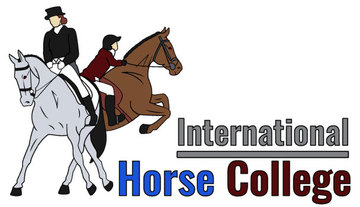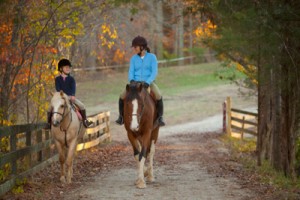Think about this for a moment! You may know what you coach or why you coach but have you considered how you coach?
As a coach you can use a variety of teaching styles in your lessons with students. You could be more familiar with the words coaching or instructional styles or even facilitative methods or approaches depending on your discipline and training. Many equestrian coaches use a more direct style of teaching in their lessons where the coach gives commands or demonstrates and the students follow their cues.
Take the survey here about equestrian coaching styles
Think of one of your lessons where you say: Whole ride, trot and the whole ride trots on or you say: Everyone, come in here and everyone comes in together to the designated place. These are typical examples where you as the coach are making all or almost all of the decisions and taking responsibility for the students’ learning in the lesson.
Another similar style of teaching allows the students to take a little more responsibility in making decisions by practising for a set time on their own or working with a partner. Does this type of teaching style sound familiar? By taking more responsibility and making more of the decisions, students can also assess their own performance against set criteria or choose the level of difficulty to participate.
If you use words such as Command, Practice, Reciprocal, Self-check or Inclusion when you talk about your teaching style/s in coaching, you are most likely using teaching styles that encourage students to reproduce existing knowledge, replicate models, recall information and practice skills. If, for example, you are teaching your students how to brush their horse correctly, pick out their feet safely, or ride through a showjumping grid several times, you are most likely using these teaching styles.
Take the survey about equestrian coaching
Other teaching styles that you may use in your lessons will seek to shift that decision-making responsibility even further from the coach to the student. These styles are Guided Discovery, Convergent Discovery, Divergent Discovery, Learner-Designed, Learner-Initiated or Self-Teaching where the student is more likely to discover new knowledge for themselves. If, for example, your students are exploring new ways to communicate with their horse then it is more likely that you are using these teaching styles.
In these teaching styles, the student makes more decisions to be responsible for their own learning in the lessons. Be careful though when thinking about the teaching style/s that you are using – sometimes names are used in a general sense that do not always accurately describe what happens. For example, coaches sometimes say they use Guided Discovery with a group of students. It is more likely that Guided Discovery is used as a teaching style with one student rather than a group.
Generally speaking, Guided Discovery calls for the coach to ask a series of questions so that the student can discover the answer. It is difficult for all students to achieve individual learning at the same rate as others when in a group. Depending on how they are learning, some students will want to ask different questions to other students when discovering the answer.
The eleven teaching styles of Command, Practice, Reciprocal, Self-check, Inclusion, Guided Discovery, Convergent Discovery, Divergent Discovery, Learner-Designed, Learner-Initiated and Self-Teaching (labelled A-K) are found along a continuum known as the Spectrum of Teaching Styles. Because there could be an infinite number of teaching styles, these eleven are known as landmark teaching styles.
Take the survey for equestrian coaches here
The Spectrum of Teaching Styles, developed by MuskaMosston, and over time refined during a collaboration with Sara Ashworth (2008) is a unified theory about teaching and learning behaviour that is a comprehensive framework for understanding the teaching/learning process. The Spectrum is built on the idea that teaching behaviour is a chain of decision-making and that every deliberate act of teaching is a result of a previous decision.
Professor Sara Ashworth describes a teaching style as a plan of action that defines the specific decision interaction of the teacher [or coach] and the learner [or student] for the purpose of leading to the development of specific objectives in subject matter and behaviour.
Most equestrian coaches know why they coach. And as you become more experienced as a coach, you know more about the content of your lessons. When you feel confident about what you are teaching when you are coaching, you also can think about how you are actually delivering that content for your students in the lessons.
As an equestrian coach, think of how you are coaching at the moment and the variety of teaching styles that you use. Consider how well that is working for you. Knowing that there are different teaching styles that a coach can use is useful information. Using a variety of those teaching styles may help a coach achieve different learning objectives that are set in each lesson.
Take a moment to reflect on the teaching styles that have been discussed here. Which do you use in your lessons? See if you can decide which of the different teaching styles from the Spectrum you use. There is a list of the eleven teaching styles from the Spectrum below.
Remember that all teaching styles are relevant. Sometimes you may only use one or two styles and sometimes you may use a variety of teaching styles within each lesson. No particular style or cluster of styles is more important than another – it depends on what you are trying to achieve. Learning more about the Spectrum and become familiar with the differences amongst the teaching styles will help you to discover more for yourself as a coach.
If you are an equestrian coach take the survey here
Discovering what coaches think about the teaching styles that they use in their lessons is important for future coach education. The Spectrum provides a comprehensive, logical and unique system for studying teaching and learning that can benefit equestrian coaches.
Cristine Hall, from the University of Southern Queensland, Toowoomba has designed a short set of questions in a survey on teaching styles that may help you consider the teaching styles that you use right now. Your feedback about what you believe you do is important and will contribute to ongoing research in coach education.
The survey, apart from requesting some background information, has only eleven questions. The questions ask how often (if at all) you use each of the eleven teaching styles from the Spectrum in your coaching. That’s only a one click response per question. You can have it done in ten minutes! You might learn more about your own coaching from considering the teaching styles described in the survey.
Think about the teaching styles that you use in your lessons and please complete the survey now – click here. No names or identifying details will be published from the survey.
Remember your privacy is important to us. Your assistance would be greatly appreciated.
The 11 teaching styles described in the survey are:
- Teaching Style A – Command
- Teaching Style B – Practice
- Teaching Style C – Reciprocal
- Teaching Style D – Self-Check
- Teaching Style E – Inclusion
- Teaching Style F – Guided Discovery
- Teaching Style G – Convergent
- Teaching Style H – Divergent
- Teaching Style I – Learner-Designed
- Teaching Style J – Learner Initiated
- Teaching Style K – Self-Teaching
Remember to grab your free eBook On Horsemanship written by Xenophon, the great Riding Master.
Click here to complete the survey.
Stay tuned for a report on the results coming soon!
Take the equestrian coaching styles survey here.
Reference
Mosston, M., & Ashworth, S. (2008).Teaching Physical Education (1st ed.). Online: Spectrum Institute for Teaching and Learning.
The survey is part of a larger study exploring teaching styles in equestrian sports coaching. For more information on the study contact: Cristine Hall, University of Southern Queensland, Australia Telephone: +61 7 4631 1405 Email: Cristine.hall@usq.edu.au
The information about the eleven landmark teaching styles is based on the Spectrum of Teaching Styles. For more information go to www.spectrumofteachingstyles.org
For any issues with the conduct of the study contact: Ethics Co-ordinator, University of Southern Queensland, Australia Telephone: +61 7 4631 2690 Email: ethicsofficer@usq.edu.auUSQ Ethics Clearance Document Number H12REA214
Click here to complete the survey about equestrian coaching styles










